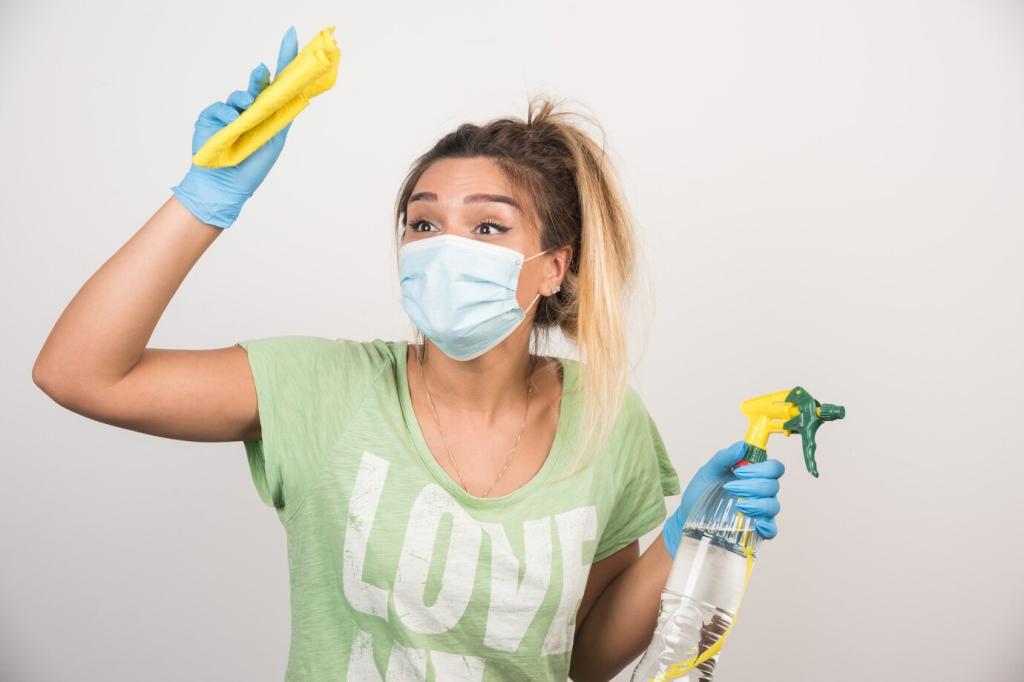Gentle and Safe Furniture Cleaners for Allergies
Chosen theme: Gentle and Safe Furniture Cleaners for Allergies. Breathe easier with calm, science-backed routines and heartfelt stories that make every surface kinder to sensitive noses and skin—while keeping your home beautifully clean.
Why Gentle Matters: Allergens, Irritants, and the Air You Breathe
Fragrances, dyes, quaternary ammonium compounds, bleach, ammonia, and potent essential oils can provoke sneezing, coughing, or contact dermatitis during furniture care. Choose gentle, pH-neutral, fragrance-free, dye-free, and low-VOC cleaners formulated without harsh disinfectants. Your nose and skin will thank you, and your sofa fabrics will last longer with kinder chemistry.
Nonionic surfactants lift soil without the high irritation risk of strong anionics; paired with distilled water they minimize mineral spots and unknown impurities. A few gentle drops in a spray bottle go far. Mist, agitate lightly with microfiber, then blot. Share your favorite mild brands in the comments for our community list.
The Hypoallergenic Ingredient Playbook
Many “gentle” cleaners still rely on methylisothiazolinone, benzisothiazolinone, or formaldehyde-releasing preservatives that can trigger rashes. Seek phenoxyethanol-only systems or food-grade organic acids at low percentages. Check batch dates and buy small sizes to finish quickly. Patch-test on wrists, and tell us which formulas your skin tolerates best for future guides.
The Hypoallergenic Ingredient Playbook



Gentle DIY Options That Respect Allergies
01
DIY can be safer when simple: 500 ml distilled water plus two drops of unscented, dye-free dish soap in a fine mist sprayer. Optional: a teaspoon of isopropyl for quick drying if tolerated. Always patch-test, ventilate, and rinse with a clean damp cloth to remove any remaining surfactant after cleaning.
02
Mix 1 liter distilled water with half a teaspoon of unscented castile soap. Lightly spritz a cloth, never saturate wood. Wipe with the grain, then follow with a second cloth dampened in plain water. Dry immediately. Tell us how your finish responds so we can recommend gentle tweaks tailored to your furniture.
03
In a bowl, combine 300 ml distilled water with one pea-sized dab of fragrance-free glycerin soap. Whip slightly, dip a cloth in the suds, and wipe. Rinse cloth, remove residue, and buff dry. Skip essential oils; they linger and can inflame sensitive sinuses for hours after a seemingly simple wipe-down.
Tools and Techniques That Calm Allergies
Microfiber, Not Paper: Capture More, Agitate Less
High-quality microfiber splits fibers to trap dust and pollen mechanically, reducing the need for stronger chemicals. Paper towels smear and shed. Color-code cloths for rooms to prevent cross-contamination. Launder hot, fragrance-free, and skip fabric softener, which reduces capture efficiency. What cloth brand actually feels gentle to your skin during longer sessions?
HEPA Pre-Cleaning Makes Every Wipe Count
Before any wet work, run a sealed HEPA vacuum with upholstery tools to capture dander and dust mite debris that otherwise becomes sludge. Slow passes beat quick ones. Empty outside if possible. This step often halves cleaner use, a win for both allergy comfort and household budgets—share your before-and-after experiences.
Drying, Sunlight, and Mold Prevention
Moisture invites mold, another powerful allergen. Use fans, cross-breezes, and dehumidifiers to speed drying after spot cleaning. Morning sunlight can help freshen cushions, but protect dyes from prolonged exposure. Set a timer to flip pieces and check seams. Subscribe for our quick-dry checklist tailored to small apartments and tight spaces.
A Gentle-Cleaning Story From Our Community
Our reader Maya thought spring pollen caused every evening sneeze. The real culprit was a “neutral” lemon-scented wood spray that lingered on chair arms. Switching to a fragrance-free, low-VOC cleaner plus a rinse wiped those sneezes away. Have you uncovered a surprising trigger in your routine? Tell us below.


A Gentle-Cleaning Story From Our Community
After the change, Maya’s toddler could cuddle during story time without rubbing itchy eyes. The trick was tiny: diluted, pH-balanced cleaning and thorough drying. No heavy perfumes, no sticky silicone film. Let us know if you want our step-by-step to recreate her gentler routine this weekend, with ingredients you trust.
Build Your Allergy-Smart Cleaning Routine
Monday: HEPA vacuum upholstered pieces. Wednesday: spot clean spills with gentle solution. Friday: dust wood and leather with barely damp microfiber, then dry. Rotate cushions weekly. Keep windows cracked during routines. Save and share this rhythm; we will refine it together based on your feedback and family schedules.
Blot immediately, then apply your mild cleaner to the cloth, not the stain. Work edges inward, rinse cloth frequently, and keep airflow moving. Avoid strong deodorizers; instead, repeat gently over days. Post a photo in the comments, and we can suggest an allergy-safe sequence for your specific fabric type.
Create a simple log of products, dates, and reactions. If sneezes spike, review preservatives or scents. If comfort improves, duplicate the conditions. We will share printable trackers, ingredient cheatsheets, and expert interviews. Subscribe so you never miss a new gentle cleaner that respects allergies and your furniture’s unique needs.
